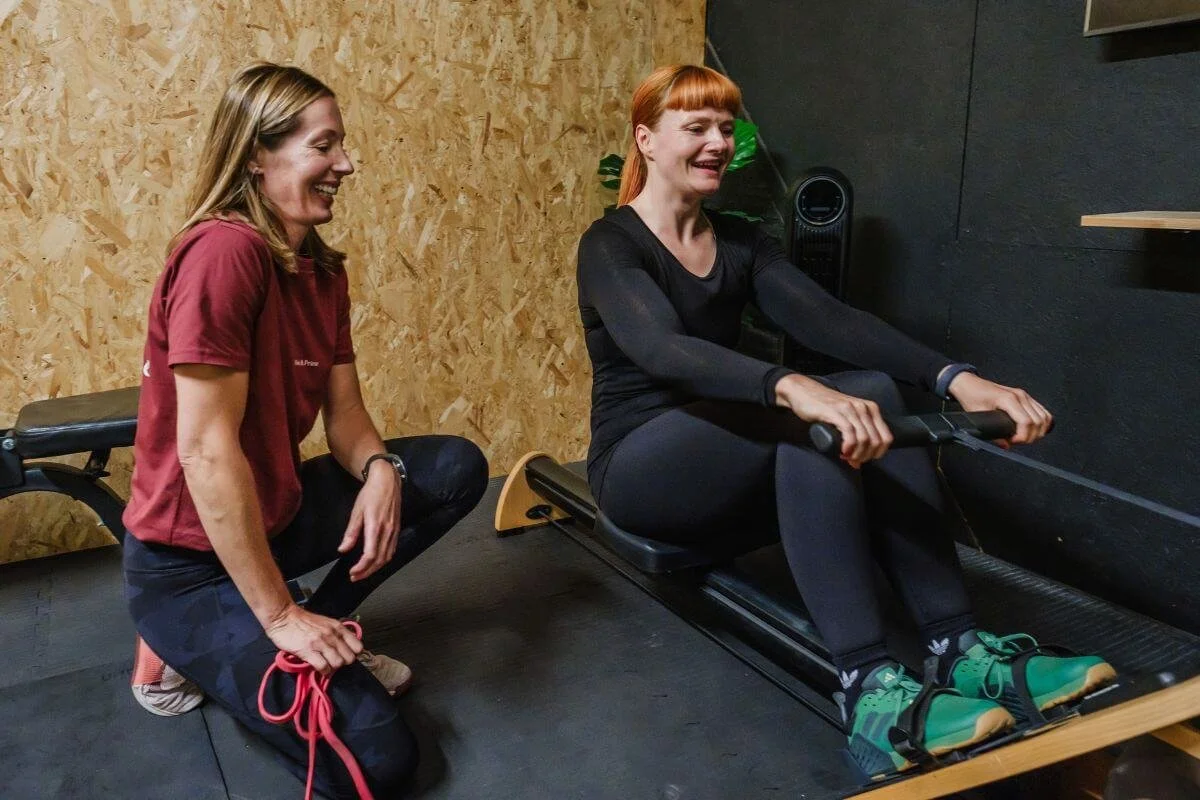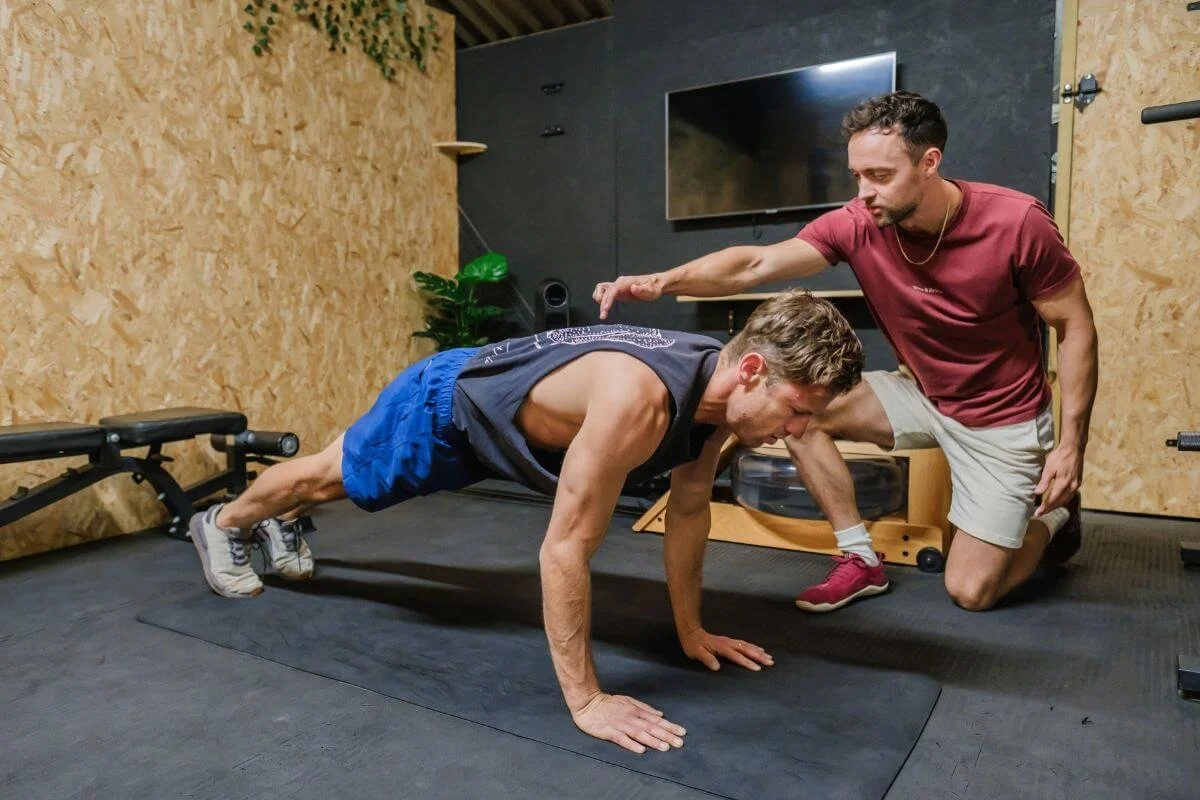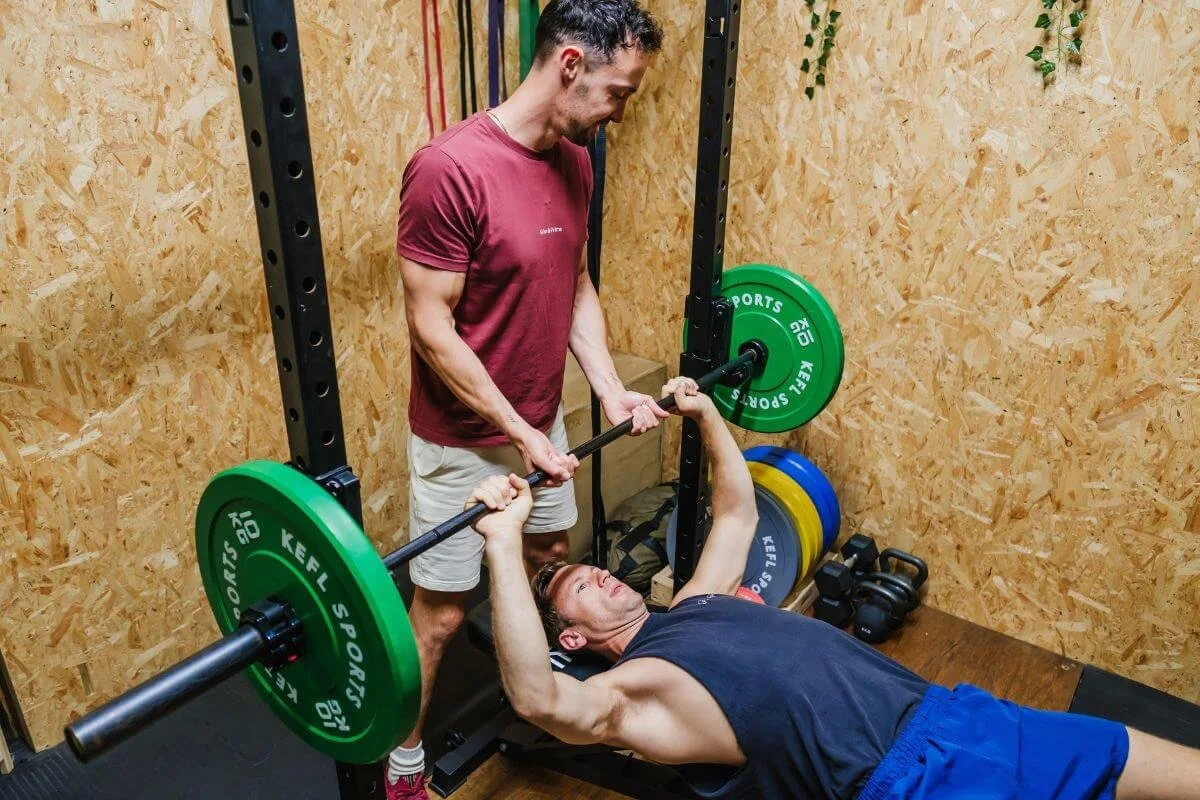The “Perfect” Exercise Routine for Longevity Revealed
Personal Trainer, Michelle Inness, deadlifting a heavy barbell in our Hove PT Studio
In this week’s blog we’re sharing—for the first time—the exercise routine we use to stay in great shape year-round and how we do the same for our clients.
Over the years, we’ve refined it to be as efficient and effective as possible. Making the most out of every minute spent in the gym.
We now use this basic structure with all of our clients and see incredible results, time and time again. Which proves that it works for all body types, experience levels and training frequencies.
Nevertheless, we have provided some advice on how to optimise it for your body type at the end of the blog.
So what is the “perfect” exercise routine for longevity?
Well, if our goal is longevity, that means we need to maximise overall health, strength and fitness over the long term and give ourselves the best chance of living a long and healthy life through consistent, sustainable training.
But two quick truths before we start:
1) Consistency is key
The best plan is the one you’ll actually stick to. So it’s important to create a plan that is realistic and achievable and, at least in some capacity, enjoyable. Otherwise you simply won’t keep it up as motivation wanes.
2) Make getting to the gym easy
Generally speaking, the gym that’s closest to you or on the way to work will be the best one. Make getting there as simple and as easy as possible to reduce the amount of barriers placed before you on your not-so-motivated days.
TOP TIP: On days when I’m feeling tired or unmotivated, I say to myself, “I’ll just do the warm up.” It’s amazing how often I get started and then naturally end up doing the whole workout as blood-sugar levels and motivation increase after warming up.
Personal Trainer, Michelle Inness, supporting a client in our Hove PT Studio
The 7-day “perfect” routine
Each session: 45–60 minutes.
Warm up 5–10 min; cool down 5-10 min.
Strength work should be hard: 2/3 sets @ 3-6 reps.
Endurance work should be lighter but still challenging: 3/4 sets @ 12-20 reps.
Hold stretches for 1-2 mins.
Progress 2–5% each week (weight, reps, or time).
Day 1 — Legs, Bums & Tums
Strength:
Back/Front Squats
(Hanging) Leg Raises
Endurance:
Assault Bike or Row (medium intensity)
Walking Lunges
Sit-ups
Mobility:
Couch Stretch
Lizard Stretch
Pigeon Stretch
Day 2 — Push & Pull
Strength:
Bench/Chest Press
Pull-ups or Lat Pull-down
Endurance:
Ski Erg (medium intensity)
Push-ups
Ring rows/Cable rows
Mobility:
Doorway Pec Stretch
Banded Lat Stretch
Day 3 — Easy Engine
Low Intensity Cardio (conversational pace)
Finisher: Single-Leg Balance Work
Day 4 — Rest Day
Day 5 — Up & Down
Strength:
Deadlifts
Shoulder Press
Power / Endurance:
Power Cleans
Push Press
Mobility:
Forward Fold
Armless Prayer
Shoulder Pass-Throughs
Day 6 — Cruisey Circuit + Max Effort HIIT
Circuit (low intensity, continuous):
Twisting Movement (landmines, banded twists)
Light Cardio
Farmer’s Carry
Light Cardio
Overhead Carry
Light Cardio
Side bends or Side Plank Holds
Finisher:
High Intensity Interval Training
Short bursts of MAX EFFORT on Assault Bike followed by longer REST times
Day 7 — Rest Day
Personal Trainer, Mat Scott, guiding client in Hove PT Studio
Why it works
It trains strength, fitness, muscular endurance, mobility, balance and does so with enough recovery time to avoid frying your Central Nervous System—so you can train consistently.
Pair this exercise routine with good quality sleep, adequate protein (~1.6–2.2 g/kg), progressive overload (lift slightly heavier each week) and you’ll notice a real shift in strength, physique, and mood within weeks.
Client preparing for Pull-ups in Hove PT Studio
But does my body type matter?
Short answer: a bit—but less than you think.
Genetics (limb lengths, tendon insertions, fibre profile, recovery capacity) shape what feels natural and how fast you adapt.
Use that to tune the plan, not to avoid training.
Ultimately, just listen to your body.
Quick tweaks by body type:
Long-limbed / lever-challenged squatters
Swap to front squat or hack squat; elevate heels.
Add more hinge (trap-bar deadlift) for strength confidence.
“Easy gainer” upper body, slower lower body
Keep upper volume moderate; add a fourth lower-body exposure via light sled drags/walking lunges mid-week.
Endurance-leaning (struggle to build muscle)
Cap steady cardio at 2 sessions; push 3–4 hard sets on compounds in the 6–10 rep range; eat a small surplus.
Recover slowly / busy & stressed
Use 2 hard sets instead of 3; keep HIIT to alternate weeks; extend Zone 2 a touch for recovery.
Shoulder cranky / desk-bound
Prioritise scapular work (face pulls, Y-T-W) in warm-ups; press with neutral-grip DBs; keep daily pec/lat mobility.
Bottom line: adjust exercise selection, set-count, and cardio frequency to your levers and recovery—don’t abandon the fundamentals.
Personal Trainer, Mat Scott, supporting client with the Bench Press
Love the sound of all this but still not sure where to start?
Look no further. This is what we do. Day in, day out. And we love it.
Book a consultation with your personal trainer of choice and get started on your strength and fitness journey today.
Sometimes it can make all the difference to have a professional make the experience of training in a gym an enjoyable one and give you the confidence to know what you’re doing and why.





